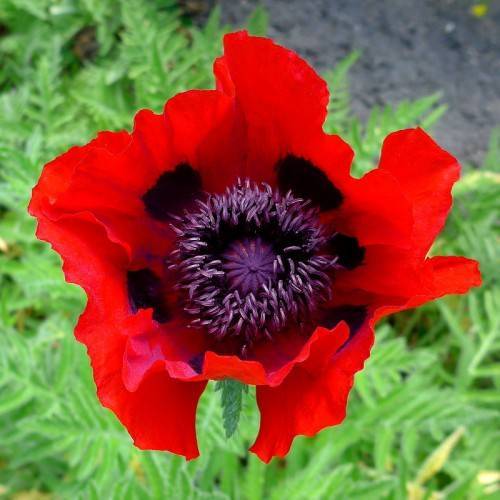
poppy
Papaver bracteatum
Cycle:
Herbaceous Perennial
Watering:
Average
Hardiness Zone:
4 - 9
Flowers:
Flowers
Sun:
Full sun
Leaf:
Yes
Growth Rate:
Low
Maintenance:
Moderate
Poisonous To Pets:
Yes
Drought Tolerant:
Yes
Salt Tolerant:
Yes
Care Level:
Medium
watering
When watering your poppies, aim for once a week. Water the soil until it is damp but not soggy. When the top inch of the soil feels dry to the touch, it's time to give them a good soak in room-temperature water. Do not allow the soil to become completely dry, as this will reduce their vigor and cause the leaves to wilt. Don't overwater, as this can lead to root rot.
sunlight
Poppies prefer full sunlight for 6 to 8 hours per day. They also appreciate some afternoon shade in areas with hotter climates. When sowing poppy seeds, wait until late spring or early summer when the soil is warm. Plant in an area that receives full sun all day, preferably in the afternoon when temperatures tend to be cooler. Water well and provide adequate drainage.
pruning
For a poppy (Papaver bracteatum) plant, pruning should be done twice a year. The first pruning should be in the late winter/early spring after the danger of the frost has passed. During this time, the plant should be pruned back to the middle of its height. This will encourage new and healthier growth throughout the season. The second pruning should occur during the late summer, around August when the blooms begin to diminish. During this pruning, the spent blooms and old stems should be cut back to the ground to promote new growth and flowering. It is recommended that deadheading or tidying up the plant be done yearly to maintain its appearance and encourage healthy growth.
Propagation
Season
Hardiness Map
FAQ
Do poppies symbolize anything specific?
Poppies are widely recognized as symbols of remembrance for those who have fought in wars. In particular, the red poppy is associated with World War I and is often worn in remembrance of those who died in places such as the trenches in Europe or the Western Front. The poppy is also seen as a sign of hope and is used to remember and honor those who have served in the armed forces. Additionally, poppies are symbolic of the beauty that can emerge from destruction because they are some of the first flowers to sprout after an area has been bombarded.
Are poppies native to all continents?
No, poppies are not native to all continents. Poppies primarily grow in the temperate regions of the Northern Hemisphere, particularly in Europe, Asia, and North Africa. In the United States, varieties of poppies can be found growing wild in certain regions. While certain species of poppies can be cultivated in the Southern Hemisphere, they are not commonly found growing in the wild.
Can we grow poppies as indoor Plant?
Yes, poppies can be grown as an indoor plant. Poppies are a popular choice for indoor gardeners because they don’t require a lot of care and will usually thrive in nearly any environment. This makes them perfect for growing under artificial light. All poppies require is a well-draining soil, regular watering and plenty of light for them to thrive indoors. To ensure that your poppies get enough light, place them near a window or beneath a grow light.
